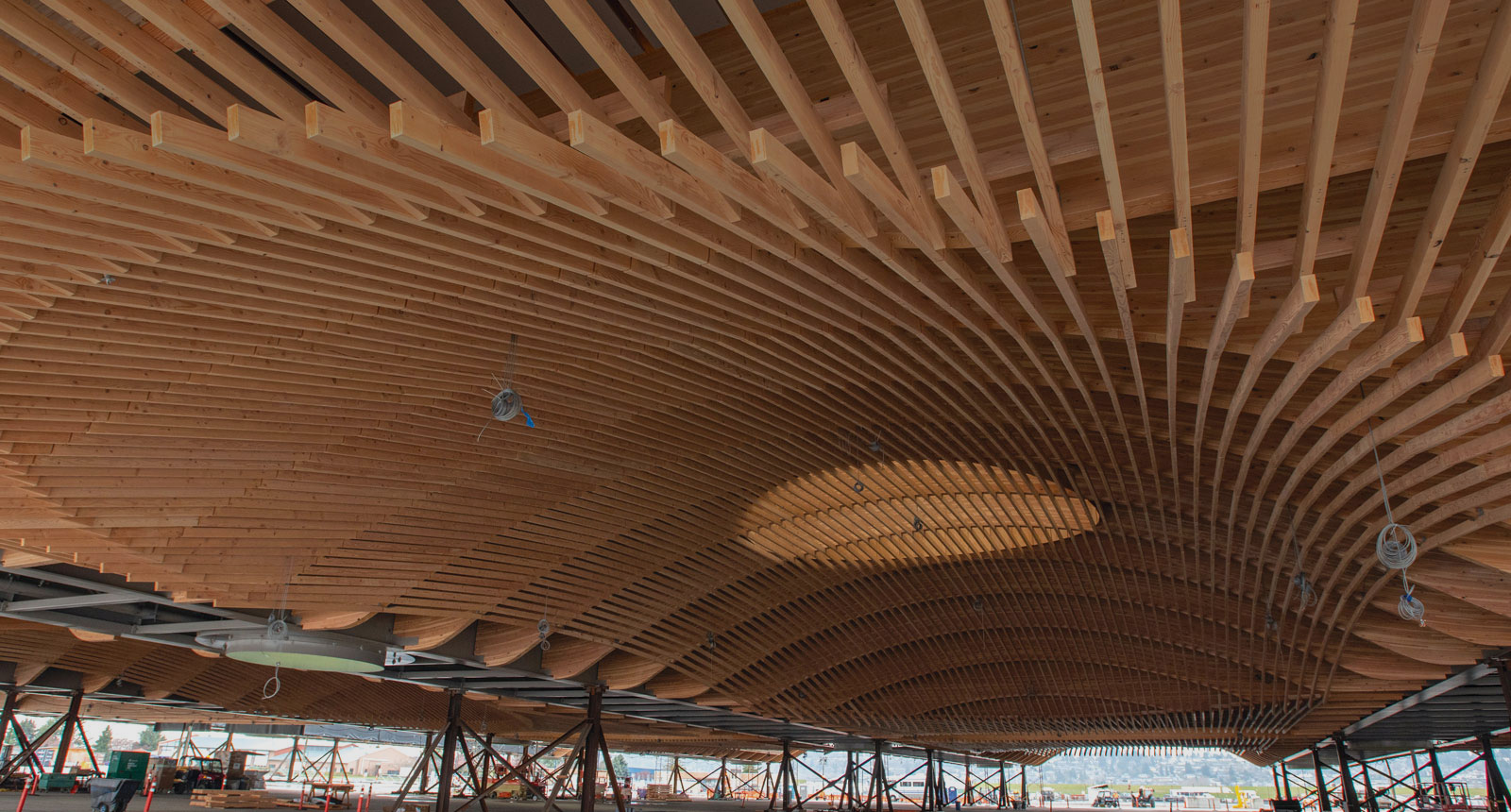Considering Mass Timber: A Sustainable Source for Affordable Housing?
Introduction
Mass timber, an innovative wood product, provides an opportune resource in Oregon for building cost-effective and eco-friendly housing. This approach addresses the current housing demands and offers long-term advantages by promoting the reusability and sustainability of mass timber structures. However, revitalizing Oregon’s lumber industry provides rife opportunities to damage forests irreparably. While mass timber can significantly benefit temporary and permanent housing construction, such a program requires research and oversight to be sustainable.
 |
| Credit: Port of Portland |
Benefits of Mass Timber in Addressing Homelessness in Oregon
1. Lightweight and Efficient Construction: Mass timber is significantly lighter than traditional materials such as concrete and steel, making it significantly easier to transport and assemble for expedited construction. In the context of homelessness, this means rapid deployment of housing units to provide immediate shelter for those in need and the ability to keep the location of temporary housing first solutions flexible.
2. Reusability and Flexibility: Temporary housing structures built from mass timber can be disassembled and repurposed into more permanent housing solutions. This flexibility ensures that initial investments in temporary shelters continue to provide value as the community's needs evolve. Multi-family housing can be later converted into single-family housing and vice versa. Rebuilding structures to adapt to changing construction codes is also an option that concrete and steel structures lack.
3. Sustainability and Environmental Impact: Mass timber is a renewable resource, as much as any wood product can be. As mass timber uses lower-quality wood than typical construction, focusing on raising specific species of trees to the exclusion of others is less of a concern. Utilizing locally sourced timber for construction promotes the Oregon lumber industry, providing a PR boost and economic benefits to the region. The lower carbon footprint of mass timber compared to concrete and steel further emphasizes its environmental advantages.
 |
| Credit: Miller Timber Services, Oregon |
Addressing Environmental Concerns
While mass timber offers numerous benefits, we must consider and address associated sustainability concerns, particularly those related to forestry practices.
1. Chemical Treatments and Health Impacts: Mass timber products often undergo treatments to enhance fire resistance and durability. These treatments can involve chemicals that may raise environmental and health concerns. Choosing products treated with non-toxic, environmentally friendly chemicals is crucial to mitigate adverse effects.
2. Lifecycle Analysis: Conducting a comprehensive lifecycle analysis (LCA) of mass timber products can help understand the environmental impact from production to disposal. Oregon Mass Timber Coalition researchers are conducting such studies with the Oregon State University College of Forestry.
3. Certification and Standards: Promoting the use of certified mass timber products, such as those bearing Forest Stewardship Council (FSC) certification, ensures that the materials come from responsibly managed forests. Additionally, the flexibility in the quality of lumber usable for Mass Timber could promote more intensive clearcutting, requiring regulatory efforts to keep up with industry expansion.
Conclusion
Implementing mass timber as a solution to homelessness in Portland, Oregon, presents a compelling case for sustainable and efficient construction. The material's lightweight nature, reusability, and favorable environmental profile align well with the urgent need for rapid, adaptable housing solutions. Addressing potential environmental concerns related to chemical treatments and promoting responsible sourcing, mass timber can serve as a cornerstone in the fight against homelessness while boosting the local lumber industry.
Further Learning
For those interested in learning more about the current state of Portland’s Mass Timber industry, consider exploring the following resources:
Oregon Mass Timber Coalition: This collaboration between state agencies and universities prioritizes affordable housing and sustainable forestry practices. Members include the University of Oregon, Oregon State University, Business Oregon, and the Oregon Department of Forestry.
Port of Portland: The Port of Portland’s Terminal 2 is a local campus for Oregon Mass Timber Coalition’s innovation in housing construction. PDX airport’s remodel utilizes a Mass Timber frame, and Hacienda Community Development Corporation is developing modular homes at Terminal 2 with funding provided by the Oregon State Legislature.
As Mass Timber Takes Off, How Green Is This New Building Material?: An article published by the Yale School of the Environment catalogs concerns that increased timber usage may cause.


Comments
Post a Comment